Sites - Where are we working in 2025-2026
Please see Important Safety Related Information on the 'Coming to a task' page.
Click on the site name to see details of the site.
|
2. Emmett Hill Meadows 3. Ravensroost Meadows 5. Echo Lodge Meadows 11. Biss Wood |
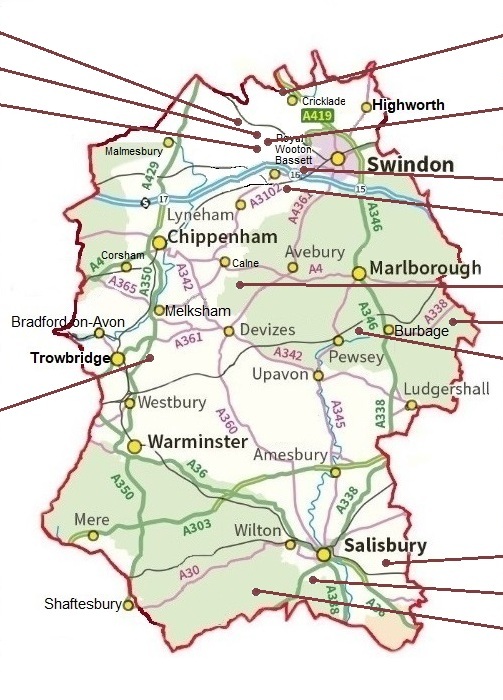 |
1. Lower Moor Farm 4. The Firs 6. Hagbourne Copse 7. Morningside Farm 8. Morgan's Hill 10. Ham Hill 11. Jones's Mill 12. Blackmoor Copse 13. Coombe Bissett Down 14. Middleton Down |
| © 2023 Ordnance Surevey and WWCV |
Site Details
| 1 | Lower Moor Farm |
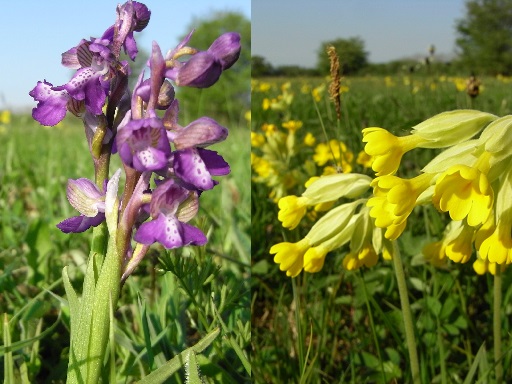 The Lower Moor Farm – Clattinger Farm complex of WWT nature reserves is a big area including the WWT Education Centre, wonderful, flower-rich,
traditionally managed farm meadows and large lakes with good bird and insect life. The Lower Moor Farm – Clattinger Farm complex of WWT nature reserves is a big area including the WWT Education Centre, wonderful, flower-rich,
traditionally managed farm meadows and large lakes with good bird and insect life.
We first worked there in the winter of 2017-2018. A variety of different tasks may be needed on this reserve. So far, we have cleared invading reeds from two ponds and have put up guards to protect young trees from deer browsing in WWT’s new nightingale wood. |
| 2 | Emmett Hill Meadows |
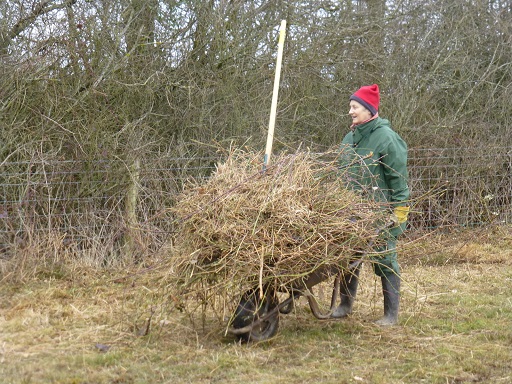 “Emmett” is Old English for ant, so there must have been abundant ant hills there sometime.
There are some still there, but many were destroyed by past ploughing.
The reserve is managed as a wildflower meadow and, to quote WWT’s web page, “In summer,
devil’s-bit scabious turns Long Meadow into a haze of purple peppered with betony, saw-wort, sneezewort and heath spotted orchids”. “Emmett” is Old English for ant, so there must have been abundant ant hills there sometime.
There are some still there, but many were destroyed by past ploughing.
The reserve is managed as a wildflower meadow and, to quote WWT’s web page, “In summer,
devil’s-bit scabious turns Long Meadow into a haze of purple peppered with betony, saw-wort, sneezewort and heath spotted orchids”.
We have helped to manage this reserve by cutting back encroaching brambles and scrub, clearing the stream and, most recently, by coppicing around a pond in the picturesquely named “Pignut Meadow”. |
| 3 | Ravensroost Meadows |
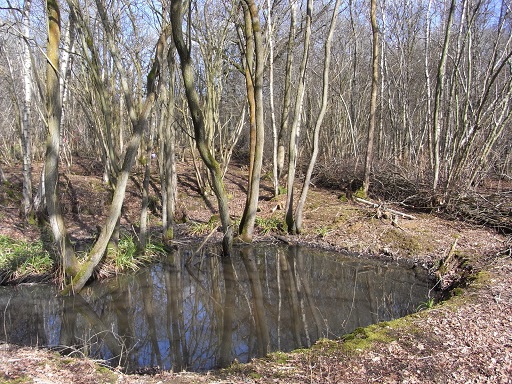 Ravensroost is large area of SSSI woodland with a wealth of plant, bird and insect life.
It is managed mainly as ‘coppice with standards’, which means having a continuous cover of coppiced hazel stools between more widely spaced oak trees.
Wild Service Tree and Bitter Vetch are two of the special plant species in this wood. Ravensroost is large area of SSSI woodland with a wealth of plant, bird and insect life.
It is managed mainly as ‘coppice with standards’, which means having a continuous cover of coppiced hazel stools between more widely spaced oak trees.
Wild Service Tree and Bitter Vetch are two of the special plant species in this wood.
A number of groups work in the wood and WWCV contributes by coppicing a considerable area each year. It is one of our most important sites in north Wiltshire; we celebrate this by combining a working day with a picnic party shortly before Christmas. |
| 4 | The Firs |
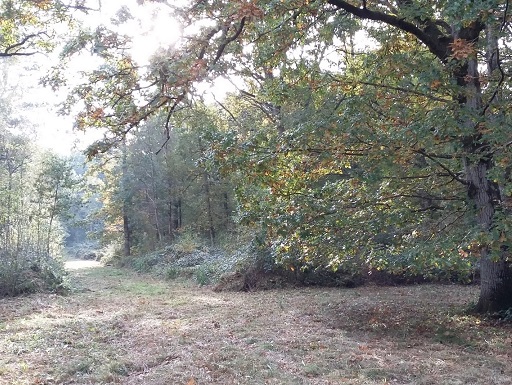 The Firs is on Wood Lane, a dog-leg between the Malmesbury and Ashton Keynes roads from Royal Wootton Bassett.
There are very few fir trees; it is an oak wood! The Firs is on Wood Lane, a dog-leg between the Malmesbury and Ashton Keynes roads from Royal Wootton Bassett.
There are very few fir trees; it is an oak wood!
There is a wide, damp, flowery central ride which the volunteers have maintained by cutting and raking each year. We have also created glades and coppiced the edges of the central ride. The result has been a wealth of flowers and a huge benefit to birds. Surveys have shown a big increase in the variety and numbers of birds since management started. We have also created new paths and cleared the perimeter track, and have felled non-native poplar trees. |
| 5 | Echo Lodge Meadows |
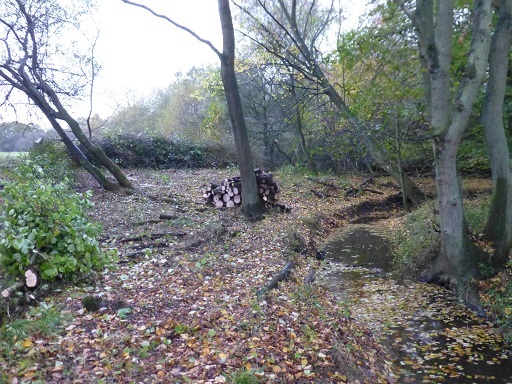 This WWT nature reserve is in the Braydon Forest area, a stronghold for Brown Hairstreak butterflies.
The reserve includes a strip of woodland with blackthorn scrub around the edges.
The butterflies lay their eggs on blackthorn and the caterpillars feed on the leaves.
The adults lay their eggs on the young re-growth and suckers which come up after the blackthorn is cut.
WWCV has made clearings in the blackthorn and we have spotted the eggs which are then laid on the resulting young shoots. This WWT nature reserve is in the Braydon Forest area, a stronghold for Brown Hairstreak butterflies.
The reserve includes a strip of woodland with blackthorn scrub around the edges.
The butterflies lay their eggs on blackthorn and the caterpillars feed on the leaves.
The adults lay their eggs on the young re-growth and suckers which come up after the blackthorn is cut.
WWCV has made clearings in the blackthorn and we have spotted the eggs which are then laid on the resulting young shoots.The wood hosts native Small-leaved Lime trees (most lime trees in towns and the country are planted hybrid limes) and a variety of flowers and ferns. There is a stream running through. The rest of the reserve is ancient meadow which puts on a stunning display of wild flowers in the summer. |
| 6 | Hagbourne Copse |
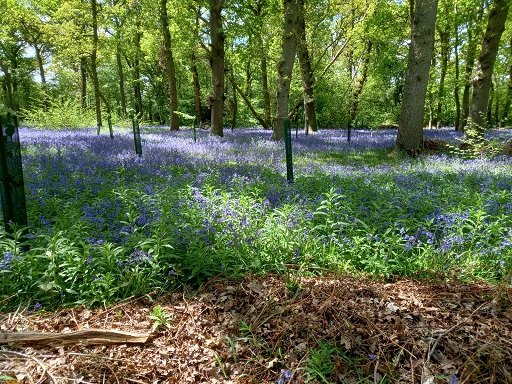 Hagbourne Copse is a new site to WWCV so we do not know much about it. It is is located in Blagrove Industrial Estate, West Swindon. Please click the 'More Information' button to visit the WWT site to find out more. Hagbourne Copse is a new site to WWCV so we do not know much about it. It is is located in Blagrove Industrial Estate, West Swindon. Please click the 'More Information' button to visit the WWT site to find out more.
|
| 7 | Morningside Farm |
 Mornigside Meadows is a new site WWCV and WWT so we do not have any information about it. Please click the 'More Information' button to visit the WWT site to find out more. Mornigside Meadows is a new site WWCV and WWT so we do not have any information about it. Please click the 'More Information' button to visit the WWT site to find out more.
|
| 8 | Morgan's Hill |
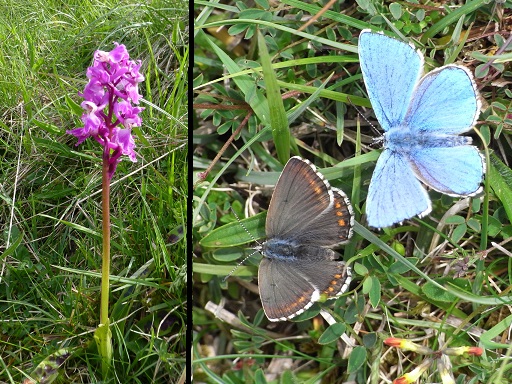 Morgan’s Hill is a wonderful site reached by walking up the track from the Smallgrain Picnic Area.
It is noted for its downland flowers and associated insect life.
Marsh fritillary and four species of ‘blue’ butterflies can be seen; it is one of the few sites left for the Duke of Burgundy.
Among many species of plants, Fly, Frog, Early Purple, Common Spotted, Lesser Butterfly and, surprisingly, Marsh Helleborine orchids can be found.
Less surprising, Morgan’s Hill is an SSSI. Morgan’s Hill is a wonderful site reached by walking up the track from the Smallgrain Picnic Area.
It is noted for its downland flowers and associated insect life.
Marsh fritillary and four species of ‘blue’ butterflies can be seen; it is one of the few sites left for the Duke of Burgundy.
Among many species of plants, Fly, Frog, Early Purple, Common Spotted, Lesser Butterfly and, surprisingly, Marsh Helleborine orchids can be found.
Less surprising, Morgan’s Hill is an SSSI.
The old quarry at the far end is particularly rich in flowers. Unfortunately, there is an ash wood upwind that provides abundant ash seeds that threaten to turn this area into ash scrub. Our most recent job on the reserve was to remove as many ash tree seedlings and saplings as possible. |
| 9 | Ham Hill |
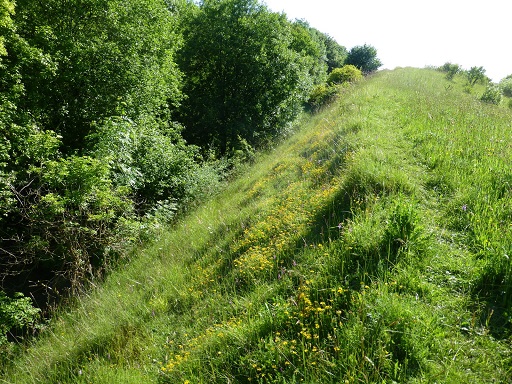 Ham Hill is an 1.5 hectares area of steep banked chalk downland running alongside the road from of Ham to Buttermere, close to the Berkshire border.
It is a Site of Special Scientific Interest (SSSI) for the rich collection of insects and plants, some of which are quite rare.
The most notable is the musk orchid (Herminium monorchis). Ham Hill is an 1.5 hectares area of steep banked chalk downland running alongside the road from of Ham to Buttermere, close to the Berkshire border.
It is a Site of Special Scientific Interest (SSSI) for the rich collection of insects and plants, some of which are quite rare.
The most notable is the musk orchid (Herminium monorchis).
The volunteers have been clearing scrub and unwanted vegitation so that they do not overwhelm and crowd out the rare species of plants. This would also affect the species of insects that depend on these plants. The site boasts seven other species of orchid as well as several other plants. It also has a colony of the Duke of Burgundy butterflies as well as the dingy skipper, green hairstreak, dark green fritillary and chalkhill blue. |
| 10 | Jones's Mill |
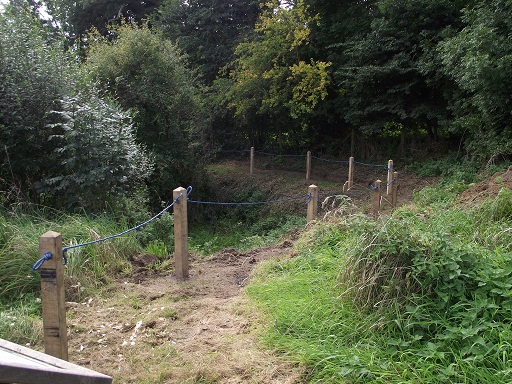 This is one of the loveliest reserves; it has a young but substantial chalk stream, the Wiltshire Avon running right through its length,
there are wonderful views from the car park and good varied walking around the perimeter.
On the northern edge it is bounded by the Kennet and Avon Canal, and you can walk along this, then hop back in at the other end of reserve,
or stay in the reserve of course. This is one of the loveliest reserves; it has a young but substantial chalk stream, the Wiltshire Avon running right through its length,
there are wonderful views from the car park and good varied walking around the perimeter.
On the northern edge it is bounded by the Kennet and Avon Canal, and you can walk along this, then hop back in at the other end of reserve,
or stay in the reserve of course.
The SSSI site is a very wet area right in the middle with good boardwalks and a lovely jumble of trees with streams, like something from Walt Disney, and, of course, the river. It has Scarlet Elf Cap in the winter followed by all manner of flowers; King Cups, Cuckooflower, Orchids, Bog Pimpernel, masses of Yellow Rattle and many more. We keep the open areas brush cut and cleared in early autumn. During winter we take down the occasional tree, improve and maintain the boardwalk and do plenty of coppicing and dead hedging. |
| 11 | Biss Wood |
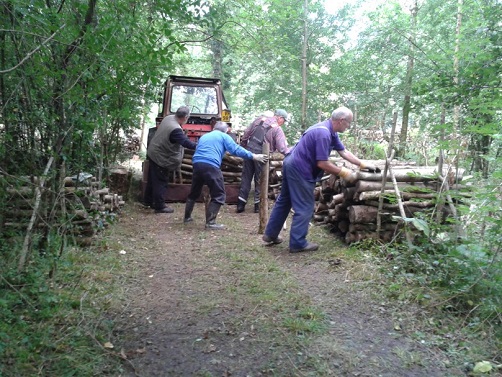 The present Biss Wood is 54 acres and is the remnant of a large wood of 170 acres known as Red Kay Coppice from the middle ages.
The Longs owned the wood from 1630 to 1930 when the huge estate was broken up. Biss Wood was sold off as part of Biss farm with the main standing timber being removed between 1929 and 1935 to settle death duties.
Between 1958 and 1971 ¾ of the wood was grubbed up for agriculture. Later on it was let to a shooting syndicate who cut two straight flight paths which are the rides of today. The present Biss Wood is 54 acres and is the remnant of a large wood of 170 acres known as Red Kay Coppice from the middle ages.
The Longs owned the wood from 1630 to 1930 when the huge estate was broken up. Biss Wood was sold off as part of Biss farm with the main standing timber being removed between 1929 and 1935 to settle death duties.
Between 1958 and 1971 ¾ of the wood was grubbed up for agriculture. Later on it was let to a shooting syndicate who cut two straight flight paths which are the rides of today.
From 1984 to 2012 the wood was a privately owned and we worked to the Forestry Commission's plan, coppicing and felling coupes of 1¼ acres on a rotation of 7 – 14 years, leaving non-intervention areas for wildlife. 2012 saw another change of ownership and the wood was gifted to Wiltshire Wildlife Trust. Bird and Bat boxes are placed throughout the wood and there is a stable population of Silver washed Fritillary. All butterflies are monitored annually and in 1980 over thirty species were recorded. Each year, blue bells and orchids are regularly seen in the wood. Coppicing and felling have continued with the Conservation Volunteers and Boy Scouts who have the adjacent field. |
| 12 | Blackmoor Copse |
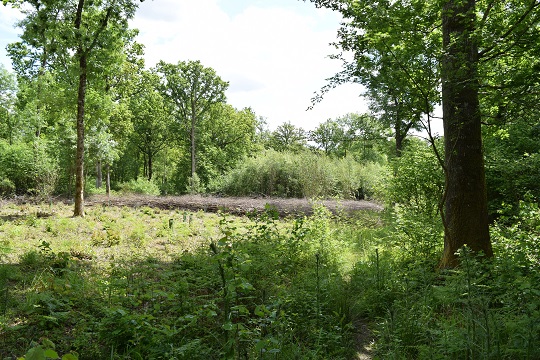 Blackmoor Copse is a Site of Special Scientific Interest (SSSI) and an Ancient Semi-Natural Woodland (ASNW).
Within the woodland are two large compartments that are cut as coppice.
These are predominately hazel and the material, called underwood, would have previously been used for making products such as sheep hurdles and thatching spars.
These areas are cut on a rotation of ten to twelve years, cutting one section or coupe each year.
This creates a matrix of un-even aged regrowth that is important to a wide range of plants, animals and insects. Blackmoor Copse is a Site of Special Scientific Interest (SSSI) and an Ancient Semi-Natural Woodland (ASNW).
Within the woodland are two large compartments that are cut as coppice.
These are predominately hazel and the material, called underwood, would have previously been used for making products such as sheep hurdles and thatching spars.
These areas are cut on a rotation of ten to twelve years, cutting one section or coupe each year.
This creates a matrix of un-even aged regrowth that is important to a wide range of plants, animals and insects.
One of the animals that this management favours is the dormouse, an increasingly rare British mammal, which is resident in Blackmoor. We also undertake ride and glade management, clearing areas of scrub and bracken to maintain ground flora. This is particularly important for wildlife especially invertebrates such as butterflies. We have two, now rare, species in Blackmoor, the Pearl Bordered Fritillary and the Purple Emperor as well as other species such as the Silver Washer Fritillary and White Admiral, amongst others. |
| 13 | Coombe Bissett Down |
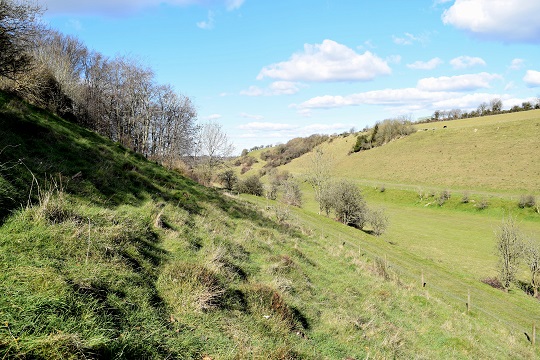 To maintain this important area of unimproved chalk downland it is grazed with livestock and managed by volunteers.
Without this important intervention the grassland would eventually revert to woodland by the succession of various colonising species. To maintain this important area of unimproved chalk downland it is grazed with livestock and managed by volunteers.
Without this important intervention the grassland would eventually revert to woodland by the succession of various colonising species.
Our job is to remove encroaching tree seedlings and regeneration that would shade out the grasses and wild flower species that are a feature of this special downland. Hawthorn, blackthorn and bramble are kept in check, and where necessary tree species such as ash and non-native sycamore are removed to prevent them reseeding into the grassland. Areas are managed on a rotational basis to ensure minimal impact and disturbance to the resident fauna and flora. The wild flowers, especially the various orchid species that are found here, and their associated insects and butterflies, are the result of this important management that we undertake. |
| 14 | Middleton Down |
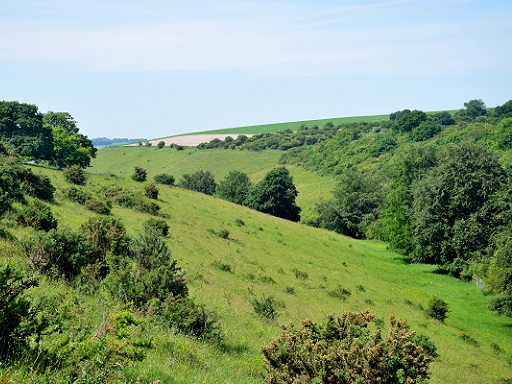 The work that we undertake at Middleton Down is similar in many ways to that which we carry out at Coombe Bissett Down.
This area of unimproved chalk downland is deeply ‘coombed’ with steep-sided short valleys, a feature of many of the hillside areas along the Ebble valley.
Gorse, blackthorn, hawthorn and other tree and shrub species are present on the hillsides here which require constant cutting back to ensure that they do not overwhelm and
shade out the resident native grassland species present. The work that we undertake at Middleton Down is similar in many ways to that which we carry out at Coombe Bissett Down.
This area of unimproved chalk downland is deeply ‘coombed’ with steep-sided short valleys, a feature of many of the hillside areas along the Ebble valley.
Gorse, blackthorn, hawthorn and other tree and shrub species are present on the hillsides here which require constant cutting back to ensure that they do not overwhelm and
shade out the resident native grassland species present.
The tree and shrub species are also important for birds, mammals and insects, so they also need careful management to ensure a balanced equilibrium or biodiversity on the reserve. Livestock is also used to maintain this reserve but is carefully controlled to ensure their browsing has the desired effect in maintaining the grassland and its associated wild flower species. There are a number of orchid species on this reserve which provide a spectacular display in summer thanks, at least in part, to the work that we undertake there. |
